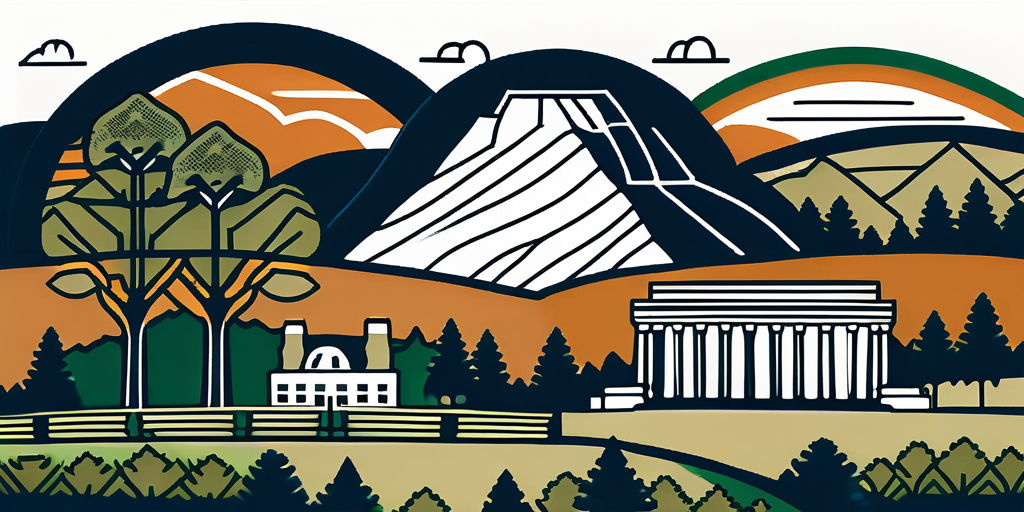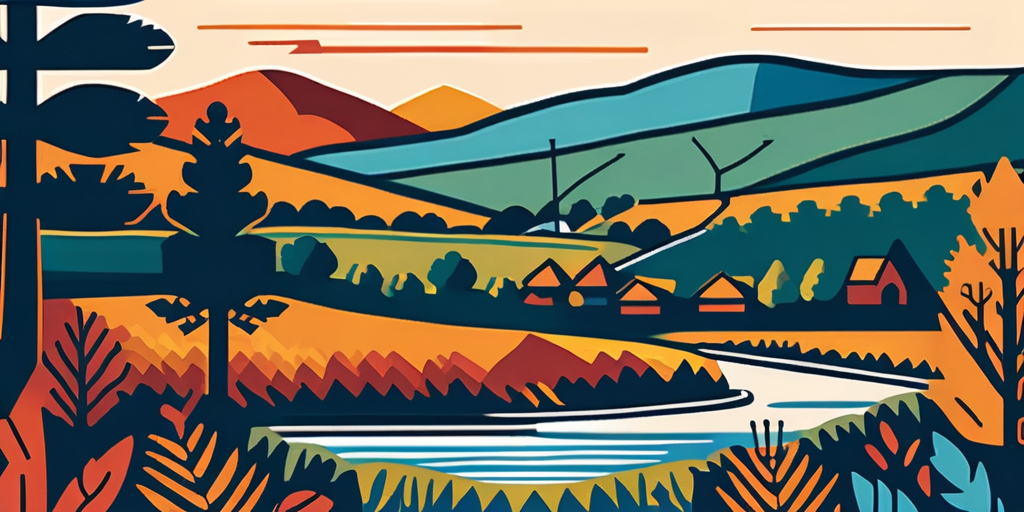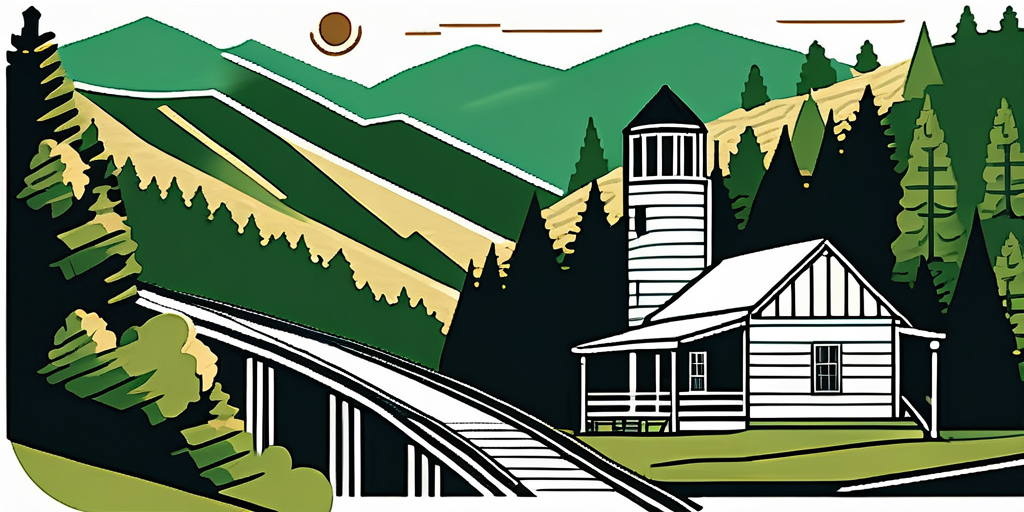
When you think of Tennessee, you might picture country music, delicious barbecue, or stunning landscapes. But delve deeper, and you'll uncover a rich tapestry of history and culture surrounding Tennessee National. This place is not just a tourist spot; it's a living testament to centuries of human experience. In this article, we’ll explore the history, cultural vibrancy, natural wonders, and architectural jewels that make Tennessee National so unique.
Tennessee National has a storied past that dates back to the earliest settlers. Each chapter of its history reveals layers of complexity and significance which contribute to its current identity.

Long before European settlers arrived, the land was inhabited by Native American tribes, most notably the Cherokee, Chickasaw, and Shawnee. These tribes lived in harmony with the rich natural resources around them, practicing hunting, fishing, and agriculture. Archaeological findings indicate that these early settlers had a deep understanding of the land, crafting tools and establishing trade routes that would later influence European settlers.
The arrival of European settlers in the 18th century marked a turning point. These newcomers brought new agricultural practices, cultural influences, and sometimes conflict. The interactions between these groups painted a complex picture of coexistence and tension as culture blended and clashed. The establishment of trade agreements and treaties, often fraught with misunderstandings, led to both collaboration and strife. The rich oral traditions of the Native tribes, which spoke of their connection to the land, began to intertwine with the narratives of the settlers, creating a tapestry of shared yet divergent histories.
The Civil War left a profound mark on Tennessee National. As a border state, Tennessee was a battleground for many fierce confrontations, and it found itself divided between loyalty to the Union and the Confederacy.
Historically significant battles took place nearby, shaping the local landscape and community. The Battle of Shiloh and the Siege of Chattanooga are just two examples of the fierce fighting that occurred, leaving scars on the land and its people. Following the war, the process of reconstruction further imprinted its effects on Tennessee’s identity, leading to social changes and economic challenges that would resonate for generations. The war not only altered the physical landscape but also transformed the social fabric of the community, as families were torn apart and new alliances formed amidst the rubble of conflict.
The late 19th and early 20th centuries witnessed the industrialization of Tennessee National. Railroads crisscrossed the region, creating economic opportunities and facilitating trade. This led to the growth of towns and the diversification of the economy, which had primarily relied on agriculture.
Modern development brought an influx of new residents. Factories and mills began to dot the landscape, attracting workers from various backgrounds and contributing to a rich cultural mosaic. Today, Tennessee National is a blend of historical preservation and contemporary advancements, reflecting a dynamic community that honors its past while looking toward the future. The preservation of historical sites, such as old railroad depots and battlefields, stands in stark contrast to the modern amenities that cater to a growing population, showcasing a community that respects its heritage while embracing innovation and progress.
The culture of Tennessee National is as colorful as its history. With deep roots in music, art, and cuisine, the area is a vibrant embodiment of Southern culture.

Music is the heartbeat of Tennessee National. From bluegrass to country to blues, the musical traditions here are rich and diverse. Festivals celebrate local and regional music, paying homage to legends while nurturing emerging artists.
Dances, often reflective of cultural rituals, are found in community gatherings and festivals, inviting participation from residents and visitors alike. These events are not only entertaining; they reinforce a sense of identity and belonging among the people. The lively atmosphere is enhanced by the sounds of fiddles, banjos, and guitars, as well as the rhythmic clapping and stomping of dancers, creating an immersive experience that captivates everyone present. Many of these gatherings also feature storytelling sessions, where local historians and elders share tales of the past, further enriching the cultural fabric of the community.
No exploration of Tennessee National’s culture is complete without tasting its culinary offerings. The Southern cuisine here is a flavorful mix of traditions and ingredients, showcasing everything from smoked meats to cornbread and collard greens.
Local restaurants often pride themselves on their recipes, many of which have been handed down through generations. Food festivals highlight this culinary richness, allowing visitors to experience a true taste of Tennessee. In addition to traditional fare, innovative chefs are beginning to blend classic Southern dishes with contemporary culinary techniques, creating a fusion that pays respect to the past while embracing the future. Seasonal ingredients play a significant role in these culinary creations, with local farmers' markets providing fresh produce that inspires chefs and home cooks alike to experiment and celebrate the flavors of the region.
Throughout the year, Tennessee National buzzes with various festivals and celebrations that showcase its cultural heritage. Events like the Tennessee Valley Fair and the National State Fair not only entertain but also educate attendees about the region’s history and culture.
These festivals are perfect opportunities to mingle with locals, enjoy live music, sample local foods, and witness traditional crafts. Whether it’s a harvest festival or a music jamboree, each event offers a unique window into the community’s spirit. Artisans display their handmade goods, from pottery to textiles, reflecting the skills passed down through generations. Workshops and demonstrations allow attendees to engage with the crafts, fostering a deeper appreciation for the artistic talents within the community. Additionally, many festivals incorporate activities for children, ensuring that the cultural legacy is passed on to future generations, making these events a true celebration of life in Tennessee National.
Aside from its historical and cultural richness, Tennessee National is blessed with breathtaking natural beauty. The region’s landscapes range from rolling hills to rushing rivers, providing countless opportunities for outdoor adventures. With its diverse ecosystems and picturesque settings, it serves as a haven for nature lovers, photographers, and anyone seeking solace in the great outdoors.
One of the crown jewels of Tennessee National is the Great Smoky Mountains. As the most visited national park in the United States, it's famous for its stunning vistas, diverse wildlife, and historical significance. Hiking trails weave through the mountains, leading visitors to incredible views and serene spots where they can connect with nature. The park is particularly renowned for its mist-covered peaks, which give the Smokies their name and create an ethereal atmosphere that captivates all who visit.
This lush environment is a sanctuary for biodiversity, and those interested in flora and fauna will find a treasure trove of plant species, numerous birds, and other wildlife. Whether you enjoy a leisurely stroll or an intense hike, the Smokies offer something for everyone. In addition to hiking, the park provides opportunities for camping, picnicking, and even horseback riding, allowing visitors to immerse themselves fully in the natural splendor. The changing seasons also bring unique experiences, from vibrant wildflower blooms in spring to the stunning fall foliage that attracts leaf-peepers from all over the country.
The Tennessee River plays a vital role in the region's ecology and economy. Its tranquil waters are perfect for boating, fishing, and swimming. The riverbanks are often lined with parks and recreational areas, making it a favorite spot for families and adventurers. The river not only supports a rich aquatic ecosystem but also serves as a crucial resource for local communities, providing water for drinking, agriculture, and industry.
Sunset views along the river can be breathtaking, offering serene moments for reflection or exploration. Observing the river’s ecosystem provides insights into the interdependence of nature and community life in Tennessee National. Kayaking and canoeing along the river's winding paths can lead to encounters with herons, otters, and other wildlife, making each outing a unique adventure. Additionally, the river hosts various events throughout the year, including fishing tournaments and community festivals, fostering a sense of camaraderie among residents and visitors alike.
The biodiversity in Tennessee National is something to behold. From native wildflowers to towering trees, the landscapes teem with life. The seasons bring different spectacles; spring and summer showcase vibrant colors, while autumn paints the scenery in warm hues. The rich soil and varied climate create ideal conditions for a wide range of plant species, including rare and endangered varieties that thrive in this protected environment.
Wildlife enthusiasts can spot a variety of species, including deer, black bears, and over 200 species of birds. The yin and yang of nature are evident, revealing the delicate balance that sustains this beautiful environment. Birdwatchers, in particular, will find paradise here, as the diverse habitats attract migratory birds and resident species alike. Guided tours and educational programs are available for those who wish to deepen their understanding of the intricate relationships within this ecosystem, highlighting the importance of conservation efforts to preserve these natural wonders for future generations.
The culture and history of Tennessee National are also encapsulated in its architecture. Buildings tell stories of bygone eras and reflect the evolution of design preferences and societal values.

Among Tennessee's architectural treasures are its historic homes and plantations. Many of these structures are preserved as museums, offering glimpses into the lives of early settlers and prominent figures in Tennessee's history. These buildings often have unique architectural styles, from Federal to Victorian designs.
Walking through these homes transports visitors back in time, providing context to the stories of the families who once lived there and the impact they had on the region. Guided tours often include fascinating anecdotes and historical details. For instance, the grandeur of the Belle Meade Plantation showcases not only the opulence of the antebellum South but also the darker realities of slavery that supported such wealth. The intricate woodwork and sprawling grounds invite exploration, while the preserved artifacts tell tales of both triumph and tragedy.
In contrast to its historic homes, Tennessee National also embraces modern architecture. Contemporary buildings and art installations showcase innovative designs and engineering feats that reflect current trends while contributing to the local landscape.
These modern landmarks often interconnect with the cultural ethos of the region, serving as hubs for art, community events, and public gatherings. They illustrate the transition from traditional to contemporary, embodying the spirit of evolution within the community. Notable examples include the sleek lines of the Nashville Music City Center, which not only serves as a convention space but also stands as a testament to the city's commitment to blending functionality with artistic expression. The building's design draws inspiration from the musical heritage of the area, with its wave-like roof symbolizing the rhythm of sound that permeates Nashville.
Architecture in Tennessee National isn't merely functional; it greatly influences the community's culture and identity. It shapes how people interact with their environment and each other. Public spaces, with their thoughtfully designed aesthetics, invite social interactions and gatherings.
In essence, the buildings and structures tell a story—one of resilience, creativity, and the melding of different cultural influences over time. This interplay between architecture and culture continues to evolve, ensuring Tennessee National remains a vibrant part of the greater narrative of American history. For example, the revitalization of urban areas has led to the incorporation of green spaces and sustainable design practices, reflecting a growing awareness of environmental responsibility. Parks and plazas are now designed not just for beauty but also for ecological harmony, fostering a sense of community and encouraging outdoor activities that enhance the quality of life for residents and visitors alike.
As we wrap up our journey through Tennessee National, it’s evident that this region is a mosaic of history, culture, natural beauty, and architectural brilliance. Whether you're a history buff, a nature lover, or someone who revels in cultural experiences, Tennessee National has something for everyone to explore and appreciate.